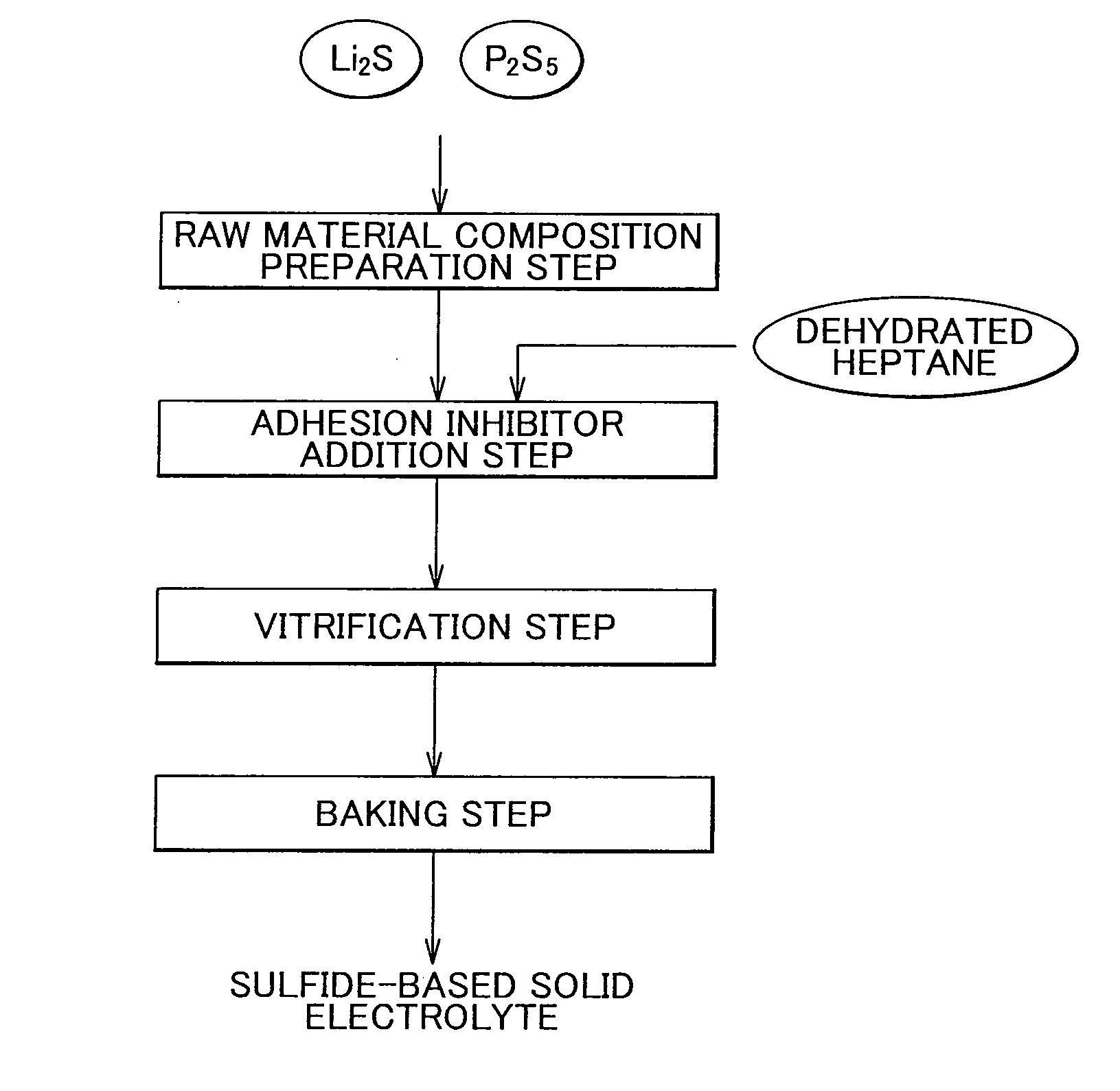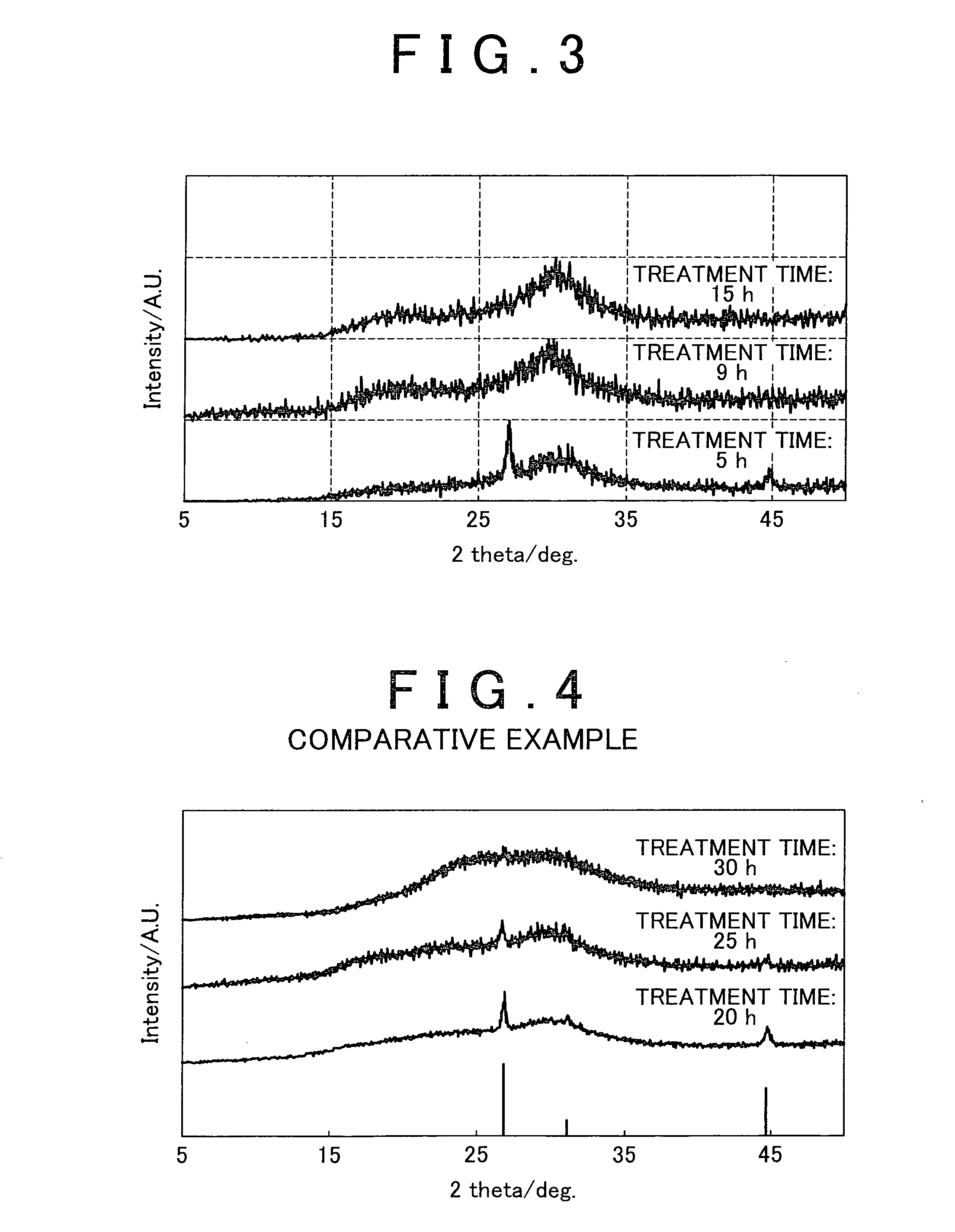Process for producing sulfide-based solid electrolyte
a solid electrolyte and sulfide technology, applied in the direction of electrochemical generators, electrical apparatus, centrifuges, etc., can solve the problems of unreacted raw material composition, adhered substances, etc., and achieve the effect of shortening the synthesis time of sulfide-based glass and efficient vitrification of raw material compositions
- Summary
- Abstract
- Description
- Claims
- Application Information
AI Technical Summary
Benefits of technology
Problems solved by technology
Method used
Image
Examples
example 1
[0069]Lithium sulfide (Li2S) crystals and phosphorous pentasulfide (P2S5) were used as starting materials. 2 g of these powders were weighed at a molar ratio of 70 / 30 (Li2S / P2S5) in a dry box in the presence of an argon atmosphere and then placed in a 45 ml zirconia milling pot. Next, 4 g of dehydrated heptane were weighed and placed in the milling pot followed by further placing zirconia grinding balls (diameter: 10 mm, 29 balls) in the milling pot and completely sealing the pot.
[0070]The milling pot was then attached to a planetary ball mill followed initially by carrying out milling for several minutes at low speed (rotational speed: 60 rpm) to sufficiently mix the materials. Subsequently, the rotational speed was gradually increased to carry out mechanical milling at 370 rpm for 5 hours, 9 hours and 15 hours, respectively. After drying was performed, glass powder was obtained.
example 2
[0071]Glass powder was obtained in the same manner as Example 1 with the exception of changing the amount of raw material composition to 20 g, changing the amount of dehydrated heptane to 40 g, using a 500 ml zirconia milling pot, and using zirconia grinding balls (diameter: 5 mm, 600 g).
example 3
[0082]Lithium sulfide (Li2S) crystals and phosphorous pentasulfide (P2S5) were used as starting materials. 2 g of these powders were weighed at a molar ratio of 75 / 25 (Li2S / P2S5) in a dry box in the presence of an argon atmosphere and then placed in a 45 ml zirconia milling pot. Next, 4 g of dehydrated heptane (dehydrated n-heptane) were weighed and placed in the milling pot followed by further placing zirconia grinding balls (diameter: 10 mm, 29 balls) in the milling pot and completely sealing the pot.
[0083]The milling pot was then attached to a planetary ball mill followed initially by carrying out milling for several minutes at low speed (rotational speed: 60 rpm) to sufficiently mix the materials. Subsequently, the rotational speed was gradually increased to carry out mechanical milling at 370 rpm for 9 hours. After drying was performed, glass powder was obtained.
PUM
 Login to View More
Login to View More Abstract
Description
Claims
Application Information
 Login to View More
Login to View More - R&D
- Intellectual Property
- Life Sciences
- Materials
- Tech Scout
- Unparalleled Data Quality
- Higher Quality Content
- 60% Fewer Hallucinations
Browse by: Latest US Patents, China's latest patents, Technical Efficacy Thesaurus, Application Domain, Technology Topic, Popular Technical Reports.
© 2025 PatSnap. All rights reserved.Legal|Privacy policy|Modern Slavery Act Transparency Statement|Sitemap|About US| Contact US: help@patsnap.com



